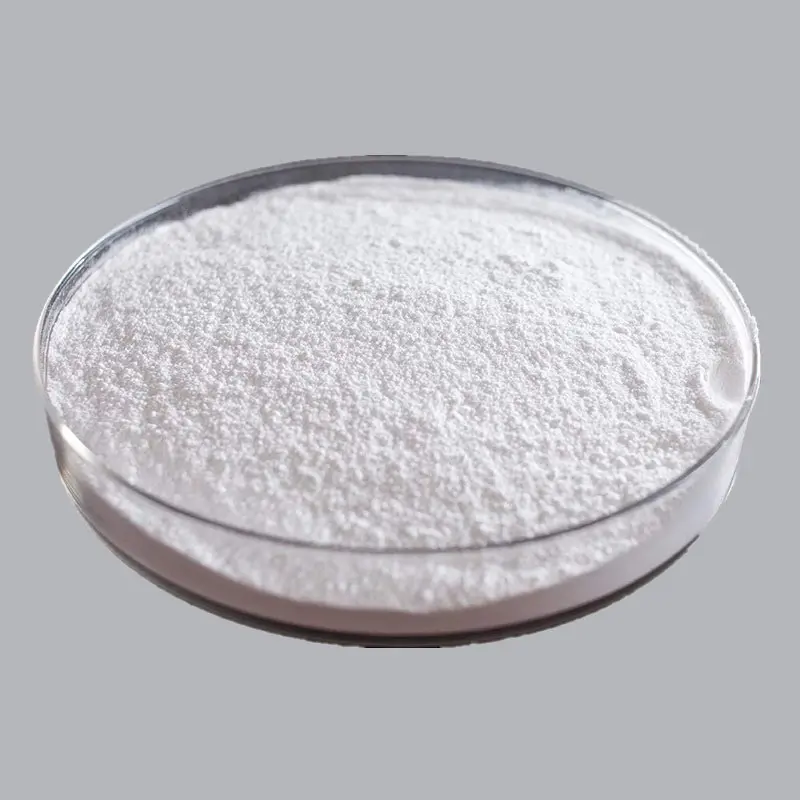Product Description
POLYCARBOXYLATE SUPERPLASTICIZER(PCE) is a dry powdered polycarboxylate superplasticizer, with a long polyoxyethylene (PEO) chain and a terminal carboxylic group was synthesized from a modified polyether (SAE-IPEG) to increase its performance in cement , electronegative carboxylic acid group as a terminal group into the long polyoxyethylene chain of PCE, which reduced the adsorption and enhanced tolerance of PCE on Mmt. It is designed to give the greatest possible water reduction using the most modern chemistry available.
Specification
| ITEMS | SPECIFICATION |
| Appearance | White or yellowish powder |
| Solid content | 98±0.5% |
| pH (23℃) | 9.0±1.0 |
| Na2SO4(%) | ≤3.0 |
| Water content(%) | ≤3.0 |
| Loss on ignition(%) | ≧86 |
| Chloridion content(%) | ≤0.1 |
| Bulk Density(kg/m3) | 600±50 |
| Water reducing rate(%) | ≧25 |
Uses
When used as a high range water reducer, Supercizer PCE will reduce water requirements up to 40% and increase concrete compressive strength at all ages, reduce permeability, and increase durability. When used to increase slump, typically 1 bag per yard of concrete will increase slump by 6-8 inches.
This product is recommended for all types of concrete where improved concrete performance with a lower water-cement ratio, ultra-high early strengths, and improved slump characteristics are desired. It is free of calcium chloride, nitrates, nitrites, or other potentially corrosive materials and is compatible with all standard concrete admixtures.
The term “polycarboxylate” actually applies to a very large family of polymers, which chemists can design to impart a special performance to concrete mixtures. Subsequent to the introduction of so-called general purpose PCE superplasticizers, new PCE products have been developed especially designed to provide high early strength and different levels of slump retention, as well as provide different capabilities to manage air contents in concrete.
One such class of polycarboxylates has little impact on initial slump, but because of a time-release function built into the PCE polymer, concrete slump increases generally in a predictive manner as a function of mixing time (see Figure 1). Thus, such a product can be added at various dosages to an already admixed concrete to dial in slump retention as a function of job conditions (haul time, temperature, delay before discharge, etc). Very often, a superplasticizer will be formulated with a blend of two or more PCEs to achieve a combined performance of both early strength and long slump life. Researchers will continue to actively manipulate PCE polymer structure to meet the ever changing material and construction requirements.
Air entrainment: Essentially all polycarboxylate-based admixtures are formulated with a defoamer to control unwanted air entrainment inherent with the PCE polymer. For both air-entrained and non-air entrained concrete applications, air contents can usually be effectively managed with selection of the PCE-based superplasticizer product most compatible with job materials. Varying carbon content in fly ash can make consistent air contents challenging as the hydrophobic nature of defoamers leads to adsorption by fly ash carbon. In general, compared to polynaphthalene sulfonate polymer (PNS) based superplasticizers, PCE-based products can make air-entraining admixtures (AEA) more efficient, meaning a lower AEA can be required to achieve the same air content.
Impact of clays: Unlike PNS superplasticizers, the PCE polymer will be readily and irreversibly adsorbed by certain clay fines that could be present in various aggregate sources. Figure 2 illustrates the impact that a clay- bearing sand, having a methylene blue value of 1.30, can have on the dosages of PNS verse PCE-based superplasticizers to achieve compatible slump. Normally, with clay-free or low-clay sands, PCEs are dosed about one-third that of PNS-based superplasticizers for comparable slump. However, when clays are present in certain sands, up to a 50% higher dosage of PCE versus PNS can be expected. Therefore, if the dosage of a PCE superplasticizer were to unexpectedly increase, checking for clay fines in the aggregate supply should be prioritized.
Flexible dosing: Again, unlike PNS-based superplasticizers, which invariably should be added in a delayed addition mode (that is, after the cement and water have begun to mix), PCEs are relatively insensitive to the time of addition, allowing for greater flexibility in the concrete batching process.
Incompatibility with PNS superplasticizers: Use of PCEs and PNS-based products in the same concrete mixture results in rapid loss of workability. Thus, the two technologies, PNS and PCE, should not be used in the same concrete mixture.
Strength Synergy with calcium-based set accelerators: When PCE-based superplasticizers are used with set accelerators and corrosion inhibitors comprised of calcium salts, unexpected strength gains have been observed compared to a similar concrete mix admixed with a PNS-based product. This synergy in strength gain with PCEs was first observed in a mix containing a calcium nitrite-based corrosion inhibitor. The data summarized in Table 1 was reported by a concrete producer who had been using a combination of a lignosulfonate-based ASTM C494 type A water reducer and a Type G PNS/Lignin-based superplasticizer to manufacture prestress piles.
This remarkable strength difference, obtained by merely changing the superplasticizer type from a PNS to a polycarboxylate, was verified from a scientific study, and can be useful in reducing cement contents while still meeting strength specifications. Interestingly, the strength difference does not seem to be associated with increased heat of hydration, but rather is related to a denser microstructure produced by the combination of a calcium-based accelerating or corrosion-inhibiting admixture and polycarboxylate-based admixture.
The PCE superplasticizer replaced both the PNS/lignin and Type A water-reducing products at about one-third the dosage rate. Also, note the 50% drop in AEA dosage rate with the PCE admixed concrete to obtain the same air content.
To summarize, though the concrete industry has learned much about harnessing the versatility and understanding the limitations of PCE-based superplasticizers, chemists, working with concrete technologists, will continue to modify the polymer structure to achieve new capabilities for the production, placement and service life of concrete mixtures.
Package
PE lined plastic woven bag, 25kg/bag.

